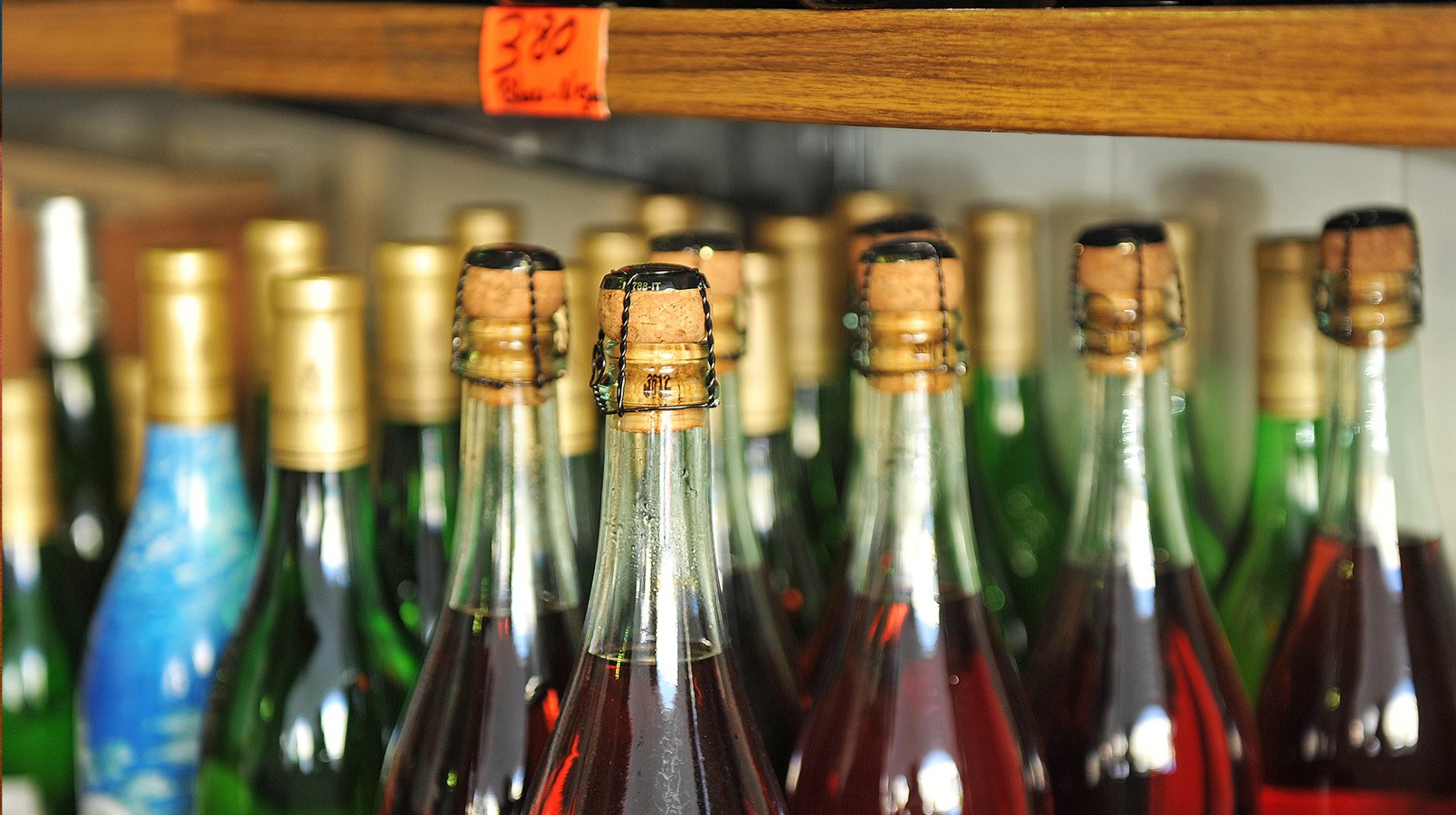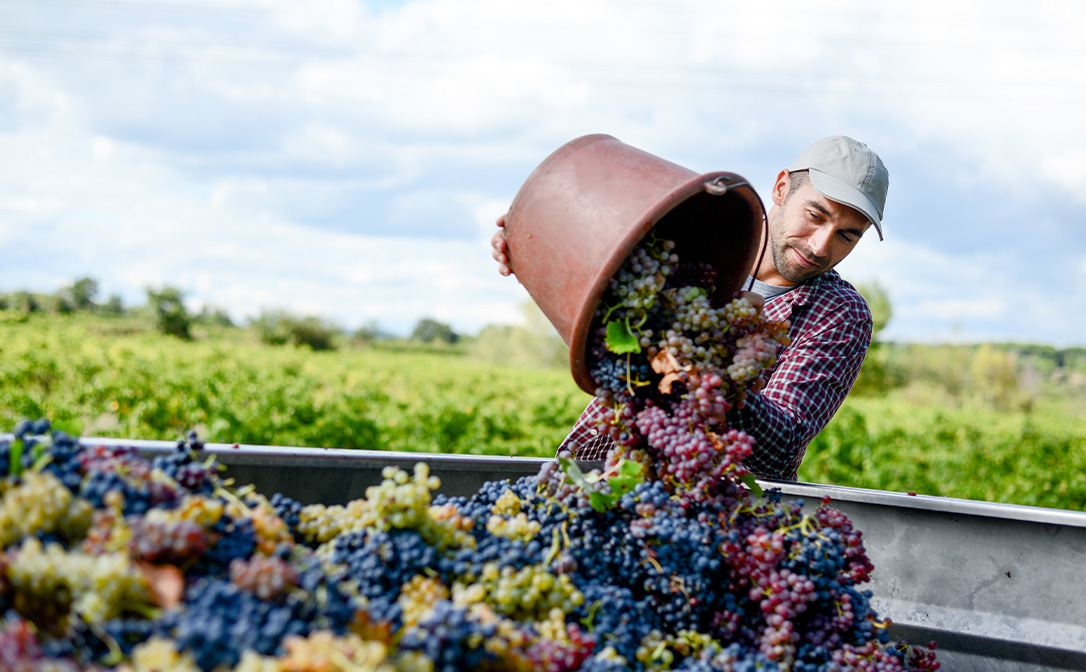The natural wine movement has gained significant momentum in the last decade. It’s helped bring a new generation of wine lovers to the industry and improved transparency in winemaking practices. However, without many legal definitions of this category, it can leave some people confused about what natural wine actually is.
To confuse matters further, some producers are choosing to market their wine as ‘natural’ despite the fact it may not follow any principles of the movement. In this blog, we will be covering some key natural wine terminology to help you navigate this exciting (and sometimes controversial) winemaking style.
Rewatch our webinar as Anjali Douglas DipWSET explores the world of natural wine, how it's made, and the different styles you can try.
What is natural wine and how is it made?
Think of natural wine as an ethos, rather than a style of wine. In fact, you will rarely see the term ‘natural wine’ written on a label. The makers of these wines are often not legally bound by a specific set of rules, however, it is widely agreed that the aim of natural wine is to get the grape from vineyard to bottle with as little added or removed as possible.
The term ‘low intervention’ is widely used to describe natural wine. To some, this could indicate that little work is done to achieve the final product, but the reality can be quite the opposite. By choosing not to use additions or “adjustments” – even if the growing season was cooler, wetter, or warmer than expected - natural winemakers must be careful in the vineyard to ensure healthy, ripe, and disease-free grapes are used. Winemakers are also faced with fewer options if a fault begins to creep into their wine, meaning extra care and attention must be paid every step of the way.
Many natural winemakers adhere to organic or biodynamic winemaking practices as a minimum standard. Though these two practices have many similarities, they have different requirements:
Organic Farming
The rules surrounding Organic production depend on the individual certification (there are many), but in general it seeks to avoid* the use of synthetic herbicides, fungicides and pesticides and opts for solutions that are less harmful to the environment such as manure or bone meal fertilizers and techniques like crop rotation and cover crops to ensure soil health.
*Copper Sulphate is permitted in organic farming but only in small doses.
Biodynamic Farming
Developed by Rudolf Steiner, biodynamic farming is similar to Organic farming but adopts a homoeopathic and spiritual philosophy alongside. Biodynamic principles include working with phases of the moon, and constellations and using various soil supplements called ‘preparations’.
Both organic and biodynamic winemakers see their vineyards as an ecosystem and seek to encourage biodiversity with other plants and wildlife, sustaining soil health and therefore the longevity of the vineyard.
If you're keen to look "behind the label", with the Level 2 Award in Wines, you'll gain an understanding of the factors that influence the style and quality of the wines you love and discover new styles and regions. Tap here to find out more.
Another key principle of natural wine is to ensure the sense of place and the growing season is reflected in the wine as far and specifically as possible. Though this can be said of much high-quality wine production, natural winemakers may go to greater lengths to achieve this, often accepting that some unexpected aromas may develop, including flavours that can be challenging to somebody who has never tasted natural wine before. This also means it is common to experience variation amongst the same labelled wine year to year, or occasionally even bottle to bottle.
So, how is this style achieved in the winery?
Ambient yeasts that exist in the vineyard and winery will ‘spontaneously’ ferment natural wine, as opposed to commercial yeasts which are commonly used for conventional production. Secondly, very little to no Sulphur Dioxide (SO2) is added to the wine. SO2 is a naturally occurring by-product of fermentation and can also be added to wine to act as a preservative, however many argue that using too much can erase the identity of the wine. Finally, natural wines have often undergone minimal clarification and filtration. Though producing wine in this way can make the wine less stable, Natural winemakers consider these stages to be interventions that would strip out the diverse and particular aromas of the wine, and reduce its complexity, and therefore the quality.
Some natural wine terms & styles you should know:
- Pétillant Naturel or ‘Pét-Nat’ – A style of lightly sparkling wine made using Méthode Ancestrale. Partially fermented grape juice is placed in a bottle which is then sealed. Fermentation will continue in the sealed bottle, trapping CO2 and making the finished wine sparkling. Usually the sediment of yeast is kept in the bottle as part of the style. These wines have lower alcohol level and may appear hazy or cloudy.
- Orange Wine – Although not exclusively natural, orange wine is often made with natural winemaking techniques. Orange wine is made by keeping white grape skins in contact with the juice for an extended period (instead of pressing them off as with white winemaking), imparting colour, tannin and additional flavours such as nuts, flowers and citrus peel.
- Glou Glou – approximately translated to ‘glug glug’, glou glou imitates the sound of wine being poured out of a bottle, and is a light-hearted term to indicate low tannin, low alcohol, light-bodied red wine. These wines display fresh red fruit aromas such as cranberry and redcurrant and are best served lightly chilled.
Is natural wine better for the environment?
Grapes for natural wine that are grown without synthetic pesticides, herbicides or fungicides, (such as organic or biodynamic wine) cause less harm to the environment. Natural wine producers may also seek to use techniques that return to the pre-industrial tradition of winemaking, using less machinery, harvesting by hand and using natural vessels such as clay to ferment or store their wine. All these options can reduce the environmental impact of the wine.
There is little discussion about the responsibility natural wine has regarding transport and packaging. These two factors have the greatest impact on the carbon footprint of a wine, and as yet are not widely brought into the conversation around natural wine.
However, natural wine’s emphasis on the preservation of living things is a more environmentally sustainable model than the conventional side of the wine industry. By purchasing natural wine you are supporting a trend of accountability within production, and this, in turn, helps the entire industry produce wine with greater care for the world around us.
This article was prepared by Marcus Hill, Verity Martin and Anjali Douglas DipWSET.
Related content:



